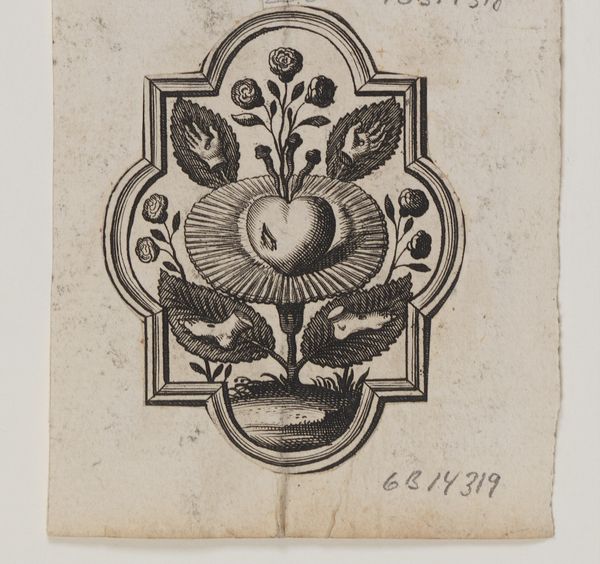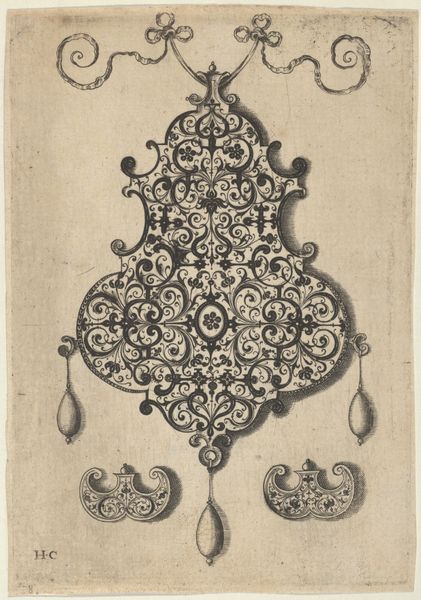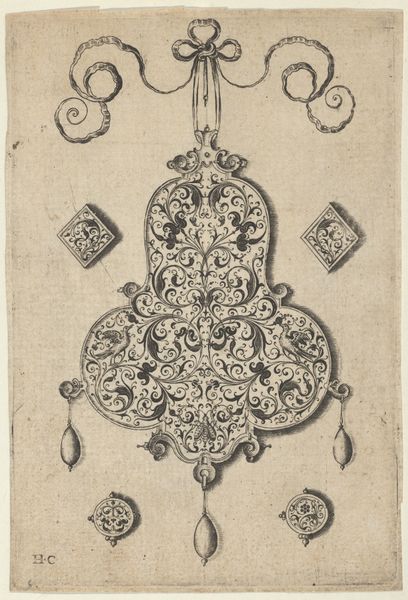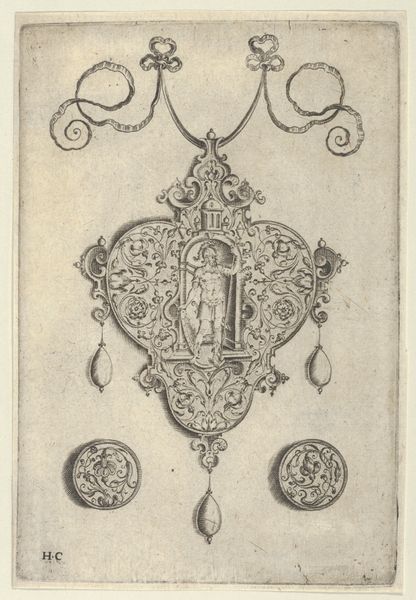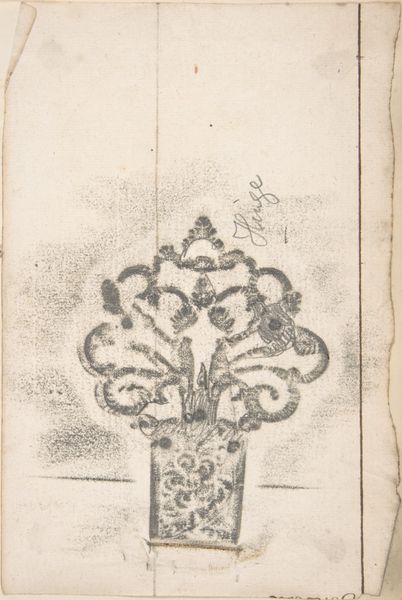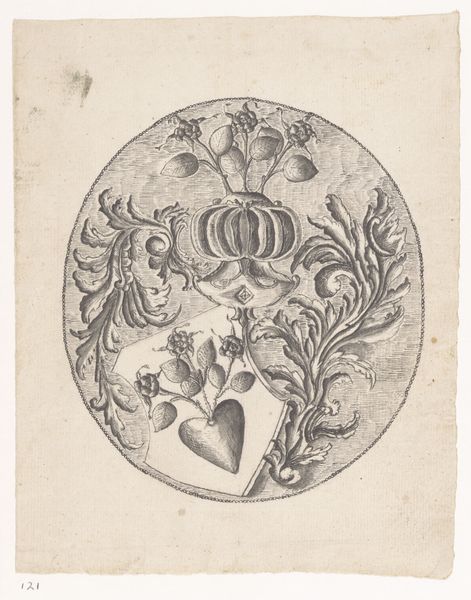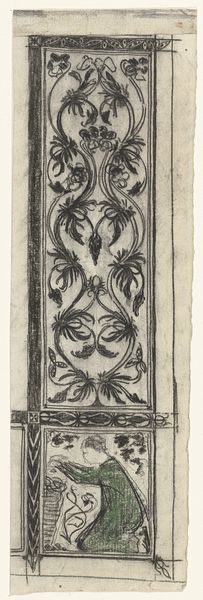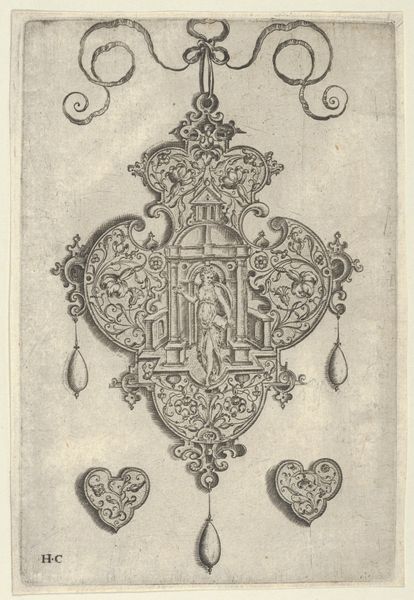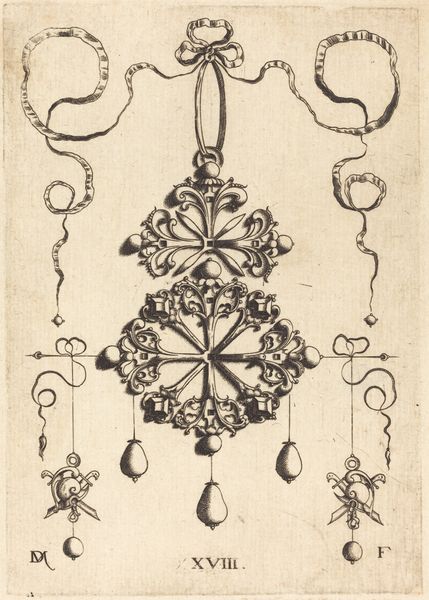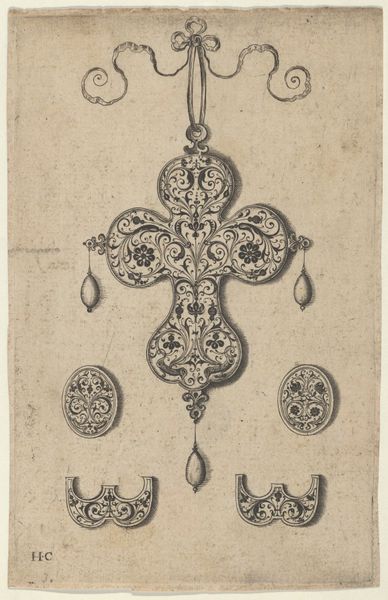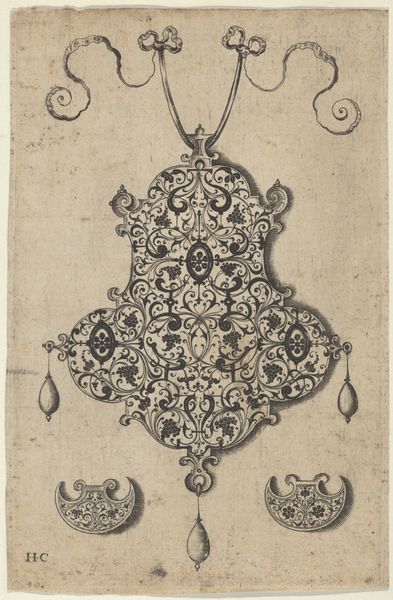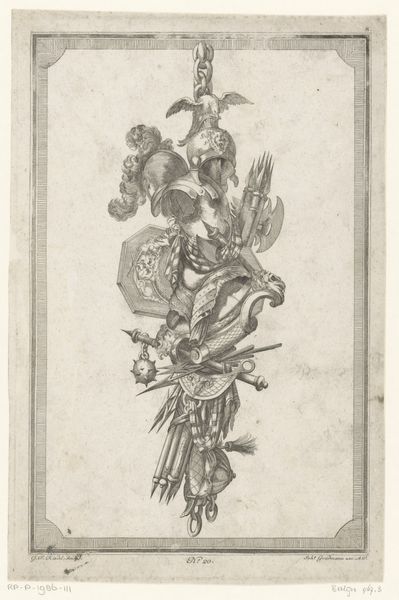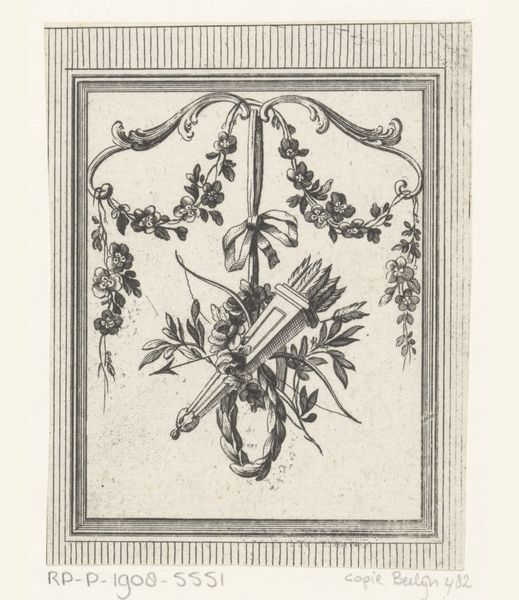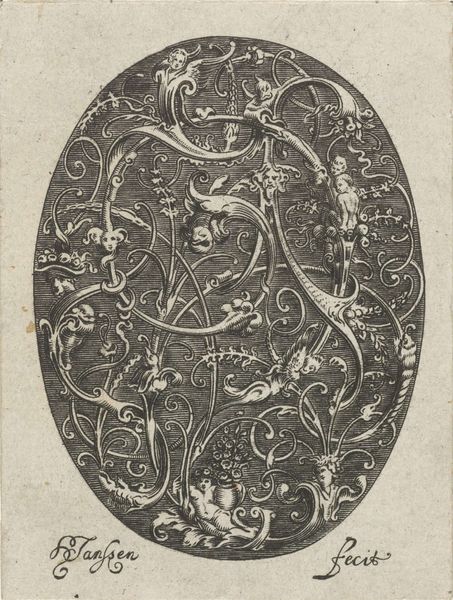
print, engraving
#
portrait
#
baroque
# print
#
old engraving style
#
ink drawing experimentation
#
pen-ink sketch
#
history-painting
#
engraving
#
erotic-art
Dimensions: height 140 mm, width 80 mm
Copyright: Rijks Museum: Open Domain
This print of the female reproductive organs was made by Hendrik Bary in the late 17th century, using engraving. The linear quality of the medium lends itself perfectly to scientific illustration, where accuracy is key. Look closely, and you'll see how the system of etched lines models the forms and textures of the organs. The density of the lines creates areas of shadow, while the absence of lines suggests highlights. Bary has also used the technique to mimic the texture of the organ surfaces, which is especially evident in the ovaries that look like clusters of grapes. Engraving, like other printmaking techniques, is a fundamentally reproductive medium, which is appropriate, given the subject matter of this image! The print could be circulated widely, allowing access to information about the female anatomy, though undoubtedly for a restricted, educated audience. It invites us to consider the labor involved in its creation, as each line was carefully incised by hand into the metal plate.
Comments
No comments
Be the first to comment and join the conversation on the ultimate creative platform.
